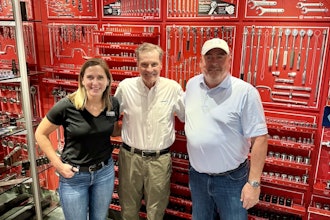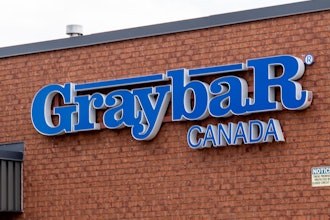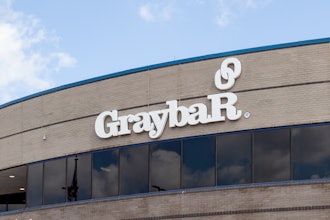Almost every B2B company is under some stress financially, at least in part due to the globally competitive market. Raw material costs and frequent market changes wreak havoc on company pricing. Despite more effective cost management, efficiency gains, and process re-engineering efforts, this remains an ever-present truth.
Without better solutions at hand, many companies only have the one-size-fits-all price change, also known as the annual up or down price adjustment, at their disposal to manage volatile cost swings. What many companies don’t realize is this approach offers limited success, and often does more harm than good. Making price changes without visibility into price sensitivity and customer buying patterns is akin to a race car driver racing in a blindfold. You are racing from pricing event to pricing event without being able to see a good map of the twists, turns, pot holes and pile-ups in your way.
Free Whitepaper: Pricing Technology — Myth vs. Reality
Across-the-board price adjustments aim to change the average selling price by treating all customers the same. But customers are not all the same. As a matter of fact, there probably isn’t a single customer with a profile exactly like an “average customer,” so why do companies continue to make pricing plans based on that core idea? The main reason is two-fold. First, companies generally lack sufficient market segmentation. Without sufficient market segmentation, calculating the right price for each unique selling circumstance is impossible.
In soft market periods, limiting price decreases can be very risky and it’s hard to prevent over discounting. And, if the whole market is brought down, it’s very difficult to raise prices back to prior levels later. Typically, price decreases happen when companies are losing clients, losing revenue, or both. Businesses accept a sacrifice of profits when revenue or customers are on the line and rationalize it as a cost of doing business.
One thing is certain with across-the-board price decreases: The market will fully accept the price decreases. From a profitability point of view, if some customers are not asking for a price decrease, then unilaterally lowering prices to all customers is clearly not a profit enhancement technique.
If a strategic decision has been made to gain market share by lowering prices, this approach can also leaks profits. It’s following the same fallacious logic again: treating all customers the same. The problem here is that some channels will not respond with greater demand in the future to offset the unit price reduction and the opportunity to earn greater total profit dollars is diminished.
The one-size-fits-all price change is a well-intentioned effort, but ultimately a rather blunt instrument in today’s complex markets. In B2B negotiations, it’s surprisingly quite common for customers to pay different prices for the same product. It’s really a byproduct of each customer’s buying circumstances and unique price sensitivity or, put differently, the fact that each customer is buying under different circumstances and each has different expectations for what a fair price is in the market based on those circumstances.
From this vantage point, it becomes clear that putting prices in-market that already account for different buying criteria is actually more equitable and fair to customers. For example, a customer that orders in a large quantity would expect to pay a lower price per unit than a customer ordering a small quantity. When prices are set properly, final adjusted market prices demonstrate that the underlying premise of an across-the-board price change is the wrong approach. Customers are not all the same, especially in terms of price sensitivities.
In a strong market, or one with inflationary cost pressures, businesses use the across-the-board price increases regularly. And, every sales person knows that this can lead to some very hard conversations with customers and the sales team. As proof of the challenge, it’s widely accepted that announced price increases only yield between one-third and two-thirds of the desired increase. Some customers will complain and then companies delay or roll back some or all of the price increases to placate them and mend the relationship.
Why does this happen? The root cause is that by trying to raise prices on customers that already pay more than the average by the same percentage as customers paying less than the average, your process doesn’t account for how sensitive each customer is to a price change for a product they buy.
The first step to smarter price changes is to admit that knowing customers’ price sensitivities will lead to more effective price changes. Omitting price sensitivity from customer and product market segmentation creates, at best, a poor proxy for grouping, limiting the ability to put prices in market that match each unique selling circumstance.
For example, perhaps one customer, in addition to the order size differentiation, also orders this product more frequently and therefore gets a better price than the customer who orders it once in a while. In fact, even in the course of a generally upward price increase, a company might choose to lower prices to some specific customers in order to grow their business with them, but the broad strokes of an across-the-board price increase limits the ability to do so.
Not every customer will have the same price sensitivity for every product. Some will be very profitable and others less so, but the magic here is that companies better serve discrete parts of the market by offering differentiated prices that match each customer’s buying circumstances. When that happens, sales are made and customers are quoted a fair and logical price. It’s a win-win. Not leaving money on the table in any negotiation is tricky business, but it’s not only possible, it’s practical when pricing science is used to remove the pricing blindfold.
Jim Vaughn has worked for more than 20 years with both B2C and B2B companies to set smarter prices. This work includes consulting for a wide variety of industries and customers, ranging from those with $100 million in annual sales to Fortune 100 clients. Jim is also the author of the recently released book: Stop Racing in a Blindfold!























